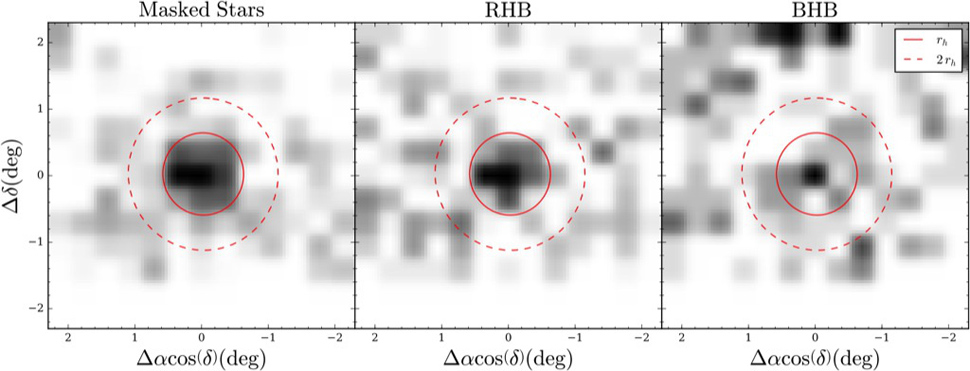
26th April 2016 New dwarf galaxy found orbiting the Milky Way Astronomers at the University of Cambridge have announced the discovery of "Crater 2" – a new member of the Local Group.
A never-before-seen galaxy has been spotted orbiting the Milky Way. With a diameter of around 7,000 light years, it becomes the fourth largest known satellite of the Milky Way, surpassed only by the Large Magellanic Cloud, Small Magellanic Cloud and the Sagittarius Dwarf. Known as "Crater 2", it was discovered by the University of Cambridge's Institute of Astronomy. Crater 2 is extremely faint compared to other members of the Local Group. Its diffuseness allowed it to remain hidden, but it was identified in recent data from the VST ATLAS survey. A computer algorithm processed images taken by the Very Large Telescope in Chile, pinpointing regions that might have unusual clustering of stars. This revealed an entire new satellite galaxy, located 380,000 light years away. "This is indeed a very rare discovery. A galaxy like Crater 2 is a sort of invisible object," says Dr. Vasily Belokurov. "We have found many similar objects in the last 10 years, but never such a large beast. It is orders of magnitude less luminous compared to most objects of similar size. It is extremely diffuse. We believe it was born that fluffy. But why, we do not yet know."
If the brightness of Crater 2 were increased by 1,000 times, its angular diameter would be twice that of the full Moon, as shown in the illustration below. This suggests there might be other dark neighbours lurking nearby. Indeed, Dr. Belokurov and his team are now using their technique to hunt for additional objects that might have been missed. It is hoped these discoveries could lead to a better understanding of the origin and evolution of our own galaxy, the Milky Way. "In the last two years alone, the number of known Milky Way satellite galaxies has doubled, largely thanks to the Dark Energy Camera on the Blanco 4m telescope in Chile," Dr. Evan Kirby, assistant professor at Caltech, who was not involved in the research, told the Huffington Post. "These galaxies are intense concentrations of dark matter," he added. "If there's a place in the universe where we can look to learn about dark matter, it's dwarf galaxies. How is it distributed? What is it made of? Future observations, especially spectroscopy, will help answer those questions." Crater 2 seems to be aligned in 3-D with the globular cluster Crater, the pair of dwarfs Leo IV and Leo V and the classical dwarf Leo II. The researchers argue that such arrangement "is probably not accidental and, in fact, can be viewed as evidence for the accretion of the Crater-Leo group." Their study is published in Monthly Notices of the Royal Astronomical Society.
---
Comments »
|









